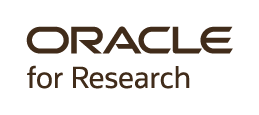A flexible, scalable, and easy to use data analysis environment for reproducible neuroimaging
To post an inquiry, please select the "Discussions" tab above (https://github.com/NeuroDesk/neurodesk/discussions), and press the "New Discussion" button. Alternatively, you may contact Steffen Bollmann (https://github.com/stebo85), Oren Civier (https://anif.org.au/team/oren-civier/) or Aswin Narayanan (https://github.com/aswinnarayanan).
2-minutes tutorial video from OHBM 2021: https://www.youtube.com/watch?v=JLv_5fycugw
Neurodesk website: https://neurodesk.github.io/
Quickstart: https://github.com/NeuroDesk/vnm/
- python3.6+
- Recommend using Miniconda (https://docs.conda.io/en/latest/miniconda.html#linux-installers)
- With virtual conda environments (https://conda.io/projects/conda/en/latest/user-guide/tasks/manage-environments.html)
- singularity (https://sylabs.io/guides/3.5/user-guide/quick_start.html)
- lmod (https://lmod.readthedocs.io/en/latest/)
- git
- Run
git clone https://github.com/NeuroDesk/neurodesk.gitto clone the repository - make sure to clone this to a directory with enough storage, write permissions and NOT a symbolic link (to be sure run cd `pwd -P`)! - Run
cd neurodeskto change into the directory - Run
pip3 install -r neurodesk/requirements.txtto install pre-requisite python packages
If running on cli only ...
- Load singularity and for best performance it should be 3.x e.g.
module load singularity/3.5.0 - Run
bash build.sh --clito install in cli mode - Run
bash containers.shfor installing indiviual containers orbash containers.sh --allfor installing all containers - Run
module use $PWD/local/containers/modules/to add the containers to your module search path. Add this to your .bashrc if working. - Run
ml availto see the installed containers at the top of the list (neurodesk containers will take preference over system modules with the same name). If a container is not yet there runml --ignore_cache avail
If running on an lxde desktop...
Run bash build.sh --lxde --edit
Run bash build.sh --init (or bash build.sh --lxde --edit)
lxde/mate: Mate
installdir: Where all the neurodesk files will be stored (Default: ./local)
appmenu: The linux menu xml file. (Usually /etc/xdg/menus/****-applications.menu)
appdir: Location for the .desktop files for this linux desktop (Usually /usr/share/applications)
deskdir: Location for the .directory files for this linux desktop (Typically /usr/share/desktop-directories)
sudo bash install.sh to install
Creates symlinks to menu files in installation dir
sudo bash uninstall.sh to uninstall
Removes symlinks
Run git pull
Run bash build.sh
install.sh does not need to be run again
Run bash containers.sh --all
For more information on WSL: https://docs.microsoft.com/en-us/windows/wsl/
- Setup WSL2 using the following instructions (Ubuntu 18.04 recommended)
https://docs.microsoft.com/en-us/windows/wsl/install-win10
Proceed until a Ubuntu bash shell is available from the Windows Host
Run the remaining commands in the Bash shell sudo apt-get install lxdeto install LXDE desktop in WSL- Reboot
sudo apt-get install xrdpto install XRDP in WSL- Open
/etc/xrdp/xrdp.iniChangeport=3389toport=3390and save - Run
echo startlxde > ~/.xsession
sudo service xrdp startto start xrdp server- Open Microsoft Remote Desktop Connection in Windows host
- Connect to
localhost:3390 - In the next login page, leave Session as
Xorg. Enter your WSL username and password and clickOK - This should open an LXDE Linux Desktop environment. Follow Linux guide from here on
Thank you to Oracle for Research for providing Oracle Cloud credits and related resources to support this project.
This project is supported by an Australian Research Data Commons (ARDC) Platform project “Australian Electrophysiology Data Analytics PlaTform (AEDAPT)”.





